Camping with Dogs: 11 Expert Tips & Advice
Updated on
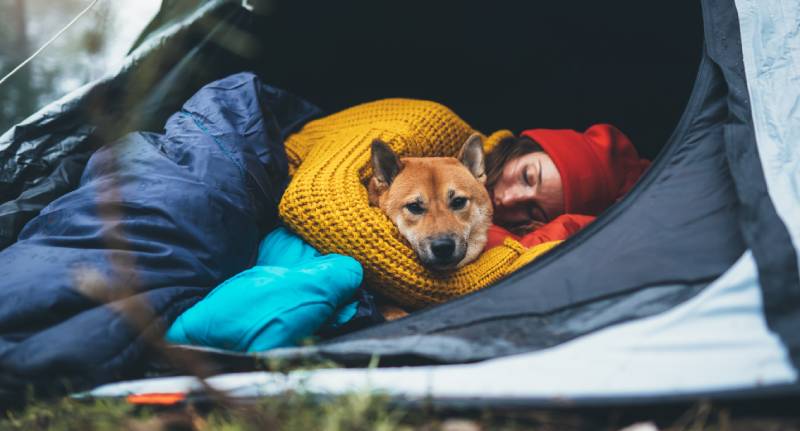
One of the most popular pastimes of the summer is camping. Many people excitedly plan trips each year, and many of them decide to bring their dogs with them!
While dogs can make excellent camping partners, it does require careful planning and preparation to ensure a safe, enjoyable experience for you and your pet. Your dog needs gear that you probably don’t usually carry, for instance.
Below, we’ll go over some of our best camping trips and tricks when you have a dog in tow.
Top 11 Tips When Camping With Dogs
1. Research the Campground
Not all campgrounds allow pets. The first step in having an amazing adventure with your dog is to research a campground that they can stay at. Many campgrounds have varying rules and even state parks within the same area may have different rules involving dogs.
Use the parks’ websites for information on where dogs are allowed (if they are allowed at all). Always double-check the dates as many campgrounds only allow dogs during certain parts of the year.

2. Bring Lots of Water
Staying hydrated is essential for both you and your dog during camping trips. If you’re camping in an undeveloped area without access to drinkable water, ensure you bring enough water for yourself and your dog.
As a general rule, double the amount of water you would typically bring for yourself to ensure your dog stays hydrated. However, larger dogs often need more water so it’s always best to bring a bit extra.
Consider using a collapsible dog bowl or a dog bowl water bottle that clips onto your backpack for convenience.
3. Keep Your Dog on a Leash
Most campgrounds enforce leash requirements. Even if they don’t, it’s always best to keep your dog restrained to prevent them from getting lost. Many dogs get lost in the wilderness each year while their owners are camping and hiking.
Leashing your dog prevents them from wandering into other campsites, encountering wildlife, or getting lost. Additionally, it aligns with the “leave no trace” principle. If your dog is well-trained and follows basic commands, you can let them run off-leash in designated areas or trails.
However, remember that dogs are less likely to follow commands in new areas, as there are many more distractions.
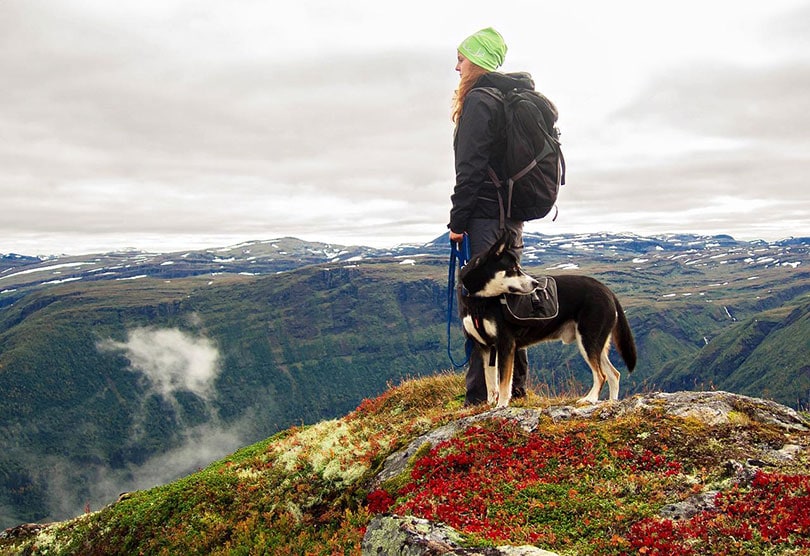
4. Keep them Protected
Just like humans, dogs need protection from extreme weather conditions. For cold-weather camping, provide your dog with a doggie jacket and a dog sleeping bag to keep them warm during chilly nights. Use booties or paw wax to protect their paws from snow and ice.
In hot desert environments, invest in heat-resistant booties and a cooling vest to prevent overheating.
Always monitor your dog’s comfort and adjust their gear accordingly. You’ll probably have to invest in new gear for your dog if you haven’t previously gone camping.
5. Pick Out the Correct Tent
Dogs typically need more room in a tent than the average person. Therefore, you’ll usually need at least a three-person tent if you’re just going camping with your dog. A whole-family tent will need to be much bigger.
Remember, dogs tend to get excited while camping, and they won’t understand that they need to sit still. Plan accordingly when choosing a tent.
You should get your dog used to the tent before going camping, as well. Use lots of treats and praise to make the tent a good place. It will make camping out in unfamiliar areas much easier.
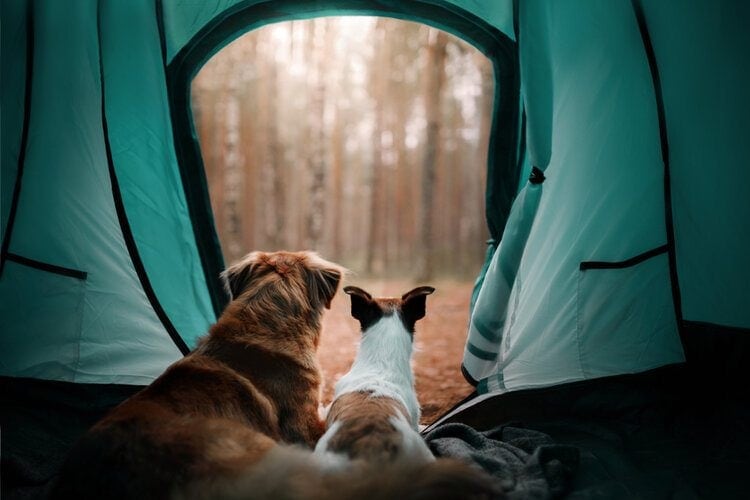
6. Bring Familiar Items
If your dog always sleeps on the same blanket, bring it camping. If your dog has a favorite ball, bring it camping. Pack up any favorite treats and comfort items, too. You want your dog to be as comfortable as possible while camping, and these items can help a lot in this regard.
7. Ensure Your Dog is Properly Vaccinated
Your dog will probably need to be completely vaccinated before you take them camping. Not only is this required by law in many areas, but dogs are at a higher risk of being exposed to diseases in the woods. Rabies may seem like a distant problem in the suburbs, but it isn’t so distant when your dog is surrounded by wild animals.
Some vets may recommend optional vaccinations for dogs that are hitting the trails. Ask your vet about any common diseases in the area you’re camping and whether or not your dog needs any extra vaccinations.
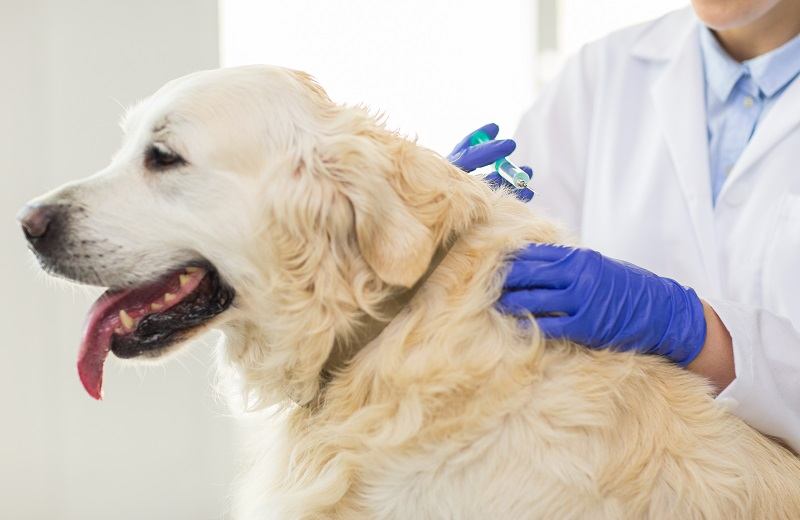
8. Work Your Dog Up to the Trip
If you’re planning on hiking at all while camping, it’s important to work your dog up to it. Even if your dog walks every day, this is much different than hiking in the woods. Go on a few shorter hikes over the months leading up to the trip. Be sure to monitor your dog and slowly make the trails more challenging.
Just like humans, most dogs aren’t instantly ready to hit the trails. They need to build up to longer hikes or risk injuries.
9. Don’t Forget the Essential Items
You’ll need to pack a lot to ensure your dog is cared for while camping. Be sure you pack a water and food bowl. Pop-up options are often best, as they take up less room. Pack an extra collar and leash, as you never know when yours will break (and these two items are absolutely required). Don’t forget an ID tag and any necessary vaccination paperwork, as well.
All these essential items do take up quite a bit of room in your bag, but they are necessary.
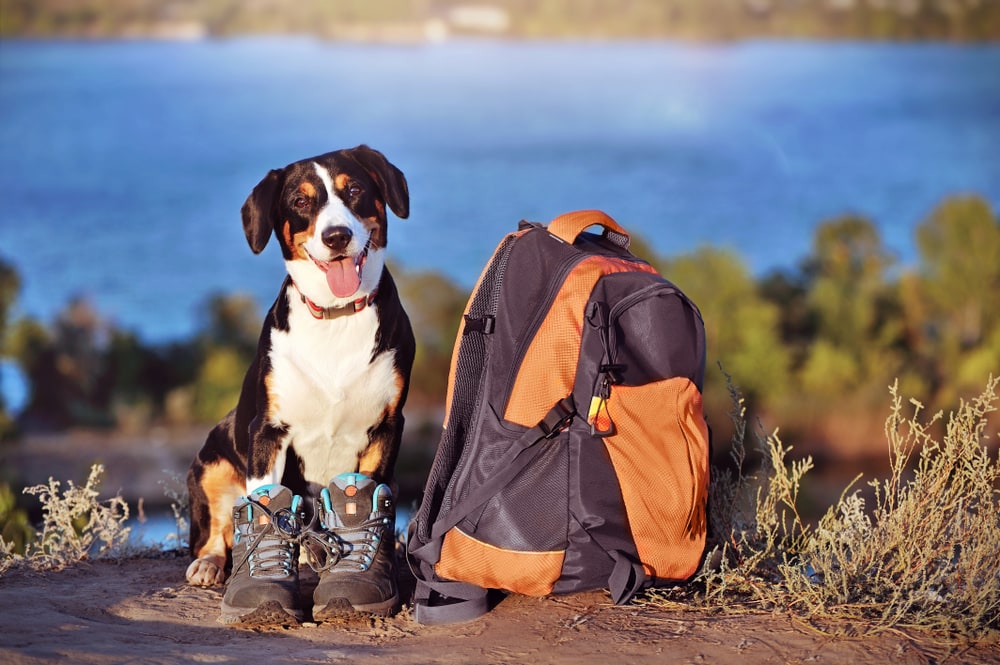
10. Consider a Tie-Out
Your dog needs to stay leashed almost all the time. However, you won’t necessarily want to keep your dog on a leash 24/7. Therefore, it often works best if you have a tie-out or other restraint to keep your dog on when you aren’t actively exploring.
Some tents have screened-in areas where your dog can hang out without being in the main tent room. However, these don’t always let your dog use the bathroom properly. Furthermore, rooms without floors may be easy for dogs to slide underneath.
11. Allow for Plenty of Rest
Many dogs are very people-oriented, so they will try to keep up with you no matter what. Sadly, this can put their own health at risk. It isn’t odd for dogs to keep going and going and going until they end up with a heat stroke or exercise-induced injury. Therefore, it is very important to monitor your dog and stop when they need a break—not when they necessarily ask for one.
Watch your dog for any sudden changes in behavior. If your dog does seem to suddenly develop strange signs of illness or discomfort, take a break and give them water. If it’s cold, get them somewhere warm. Always err on the side of caution when it comes to your dog’s health.
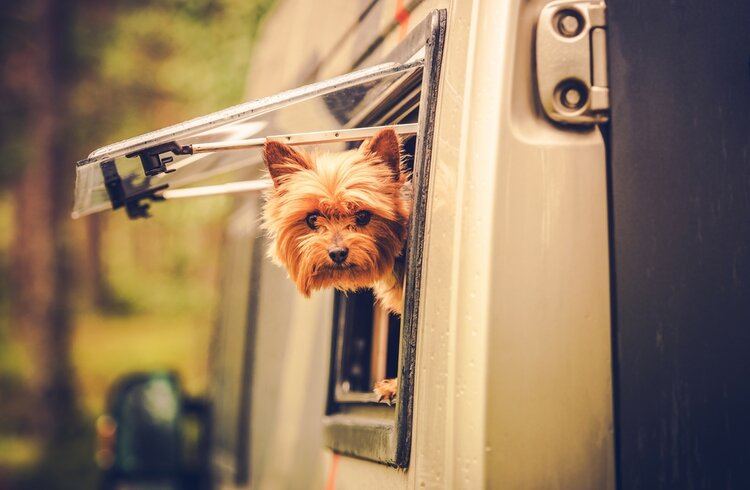
Final Thoughts
It always helps to plan ahead before you go camping with your dog. Then, when you actually start the trip, loosen up and have fun! By planning more than you probably need to beforehand, you can limit stress on the trip.
Of course, that doesn’t mean purchasing everything you could possibly purchase for your pet. However, you should spend time researching the items you do need to ensure they’re the best option you can purchase.
Acclimating your dog more than they need to before you go will also help reduce stress for both of you. Double and triple-check your bag (the effort of checking is small compared to the stress of finding out you forgot your dog’s leash).
See also:
- Camping With Cats: 12 Tips & Tricks
- Best Collapsible Dog Bowls for Travel & Hiking – Reviews & Top Picks
Featured Image Credit: A_B_C, Shutterstock












